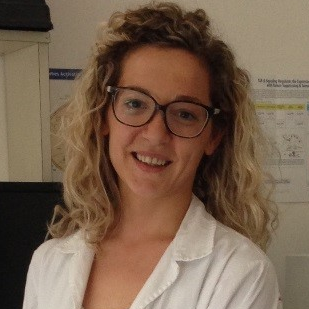Molecular Research on Chronic Venous Disease
A special issue of International Journal of Molecular Sciences (ISSN 1422-0067). This special issue belongs to the section "Molecular Pathology, Diagnostics, and Therapeutics".
Deadline for manuscript submissions: closed (31 March 2018) | Viewed by 58034
Special Issue Editors
Interests: vascular medicine; vascular biology; inflammatory biomarkers; proteolytic biomarkers; endothelium; translational research; matrix metalloproteinases; chronic venous disorders; athero-thrombotic diseases; vascular pharmacology; vascular funcxtion; metabolomics; clinical biochemistry; nutraceuticals; platelets; neutrophils; macrophages; vascular aging; laboratory medicine; diagnostic and laboratory errors; biomarkers in cardiovascular diseases; laboratory testing for inflammatory chronic diseases
Special Issues, Collections and Topics in MDPI journals
Interests: histones; sepsis; inflammation; proteolysis; cytokines and growth factors; translational research; matrix metalloproteinases; thromboinflammation; clinical biochemistry; platelets; neutrophils; macrophages; laboratory medicine; laboratory tests; monocyte distribution width; monocyte heterogeneity
Special Issues, Collections and Topics in MDPI journals
Special Issue Information
Dear Colleagues,
Chronic venous diseases (CVeD) of the lower limbs include different pathological events characterized by distinctive features sharing common hallmarks of hemodynamic alteration, inflammation, and proteolysis. The first step is represented by varicose veins (C-2) and the final disease is named non-healing leg ulcers (C-6), according to the international CEAP classification. CVeD affects a significant part of the populations worldwide with a prevalence up-to 15% in subjects aged over 70 years. Non-healing skin wounds represent a cause of significant disability and huge financial burden to the healthcare budget worldwide. Although great efforts have been made in characterizing early biochemical and molecular pathways during CVeD initiation and progression, discerning the biomolecular basis of healing/nonhealing processes, the exact biomolecular pathogenetic basis from C-2 to C-6 stages is not fully understood. Several previously published histochemical, biochemical and molecular analyses, and pharmacological treatments, have indicated that the hemodynamic shear stress, pro-apoptotic and pro-inflammatory processes, coagulative events, and enhanced degradative proteolysis, may cooperate in harmful pathways leading to nonhealing ulcers. In this respect, there is an urgent need to focus more attention on the importance of adequate biomolecular screening for hemodynamic stress, endothelial damage/repair, wound microenvironment, therapeutic treatments for improving ulcer healing. This Special Issue aims to collect insights about this complex and intricate cross talk, increasing the knowledge on the pathophysiological processes of CVeD for improving the knowledge in this field, enhancing diagnosis and therapy, and translating the usefulness of investigations in vascular medicine and health sciences.
Prof. Dr. Ferdinando Mannello
Dr. Daniela Ligi
Guest Editors
Manuscript Submission Information
Manuscripts should be submitted online at www.mdpi.com by registering and logging in to this website. Once you are registered, click here to go to the submission form. Manuscripts can be submitted until the deadline. All submissions that pass pre-check are peer-reviewed. Accepted papers will be published continuously in the journal (as soon as accepted) and will be listed together on the special issue website. Research articles, review articles as well as short communications are invited. For planned papers, a title and short abstract (about 250 words) can be sent to the Editorial Office for assessment.
Submitted manuscripts should not have been published previously, nor be under consideration for publication elsewhere (except conference proceedings papers). All manuscripts are thoroughly refereed through a single-blind peer-review process. A guide for authors and other relevant information for submission of manuscripts is available on the Instructions for Authors page. International Journal of Molecular Sciences is an international peer-reviewed open access semimonthly journal published by MDPI.
Please visit the Instructions for Authors page before submitting a manuscript. There is an Article Processing Charge (APC) for publication in this open access journal. For details about the APC please see here. Submitted papers should be well formatted and use good English. Authors may use MDPI's English editing service prior to publication or during author revisions.
Keywords
- Apoptosis
- Chronic venous disease
- Chronic venous insufficiency
- Cytokines
- Endothelial cells
- Gene expression
- Growth factors
- Hemodynamic shear stress
- Inflammation
- Microcirculation
- MMP and TIMP
- Molecular markers
- Monocyte/macrophage and neutrophil cells
- Proteinases
- Predisposing genetic factors
- Signal transduction
- Soluble mediators
- Therapeutic treatments
- Varicose vein
- Venous leg ulcer
- Wound microenvironment
Benefits of Publishing in a Special Issue
- Ease of navigation: Grouping papers by topic helps scholars navigate broad scope journals more efficiently.
- Greater discoverability: Special Issues support the reach and impact of scientific research. Articles in Special Issues are more discoverable and cited more frequently.
- Expansion of research network: Special Issues facilitate connections among authors, fostering scientific collaborations.
- External promotion: Articles in Special Issues are often promoted through the journal's social media, increasing their visibility.
- Reprint: MDPI Books provides the opportunity to republish successful Special Issues in book format, both online and in print.
Further information on MDPI's Special Issue policies can be found here.







